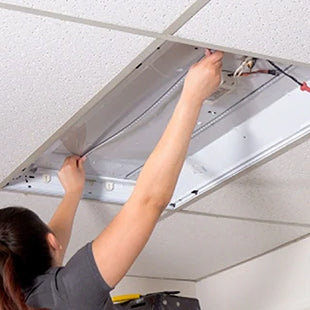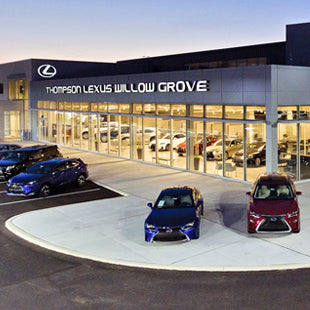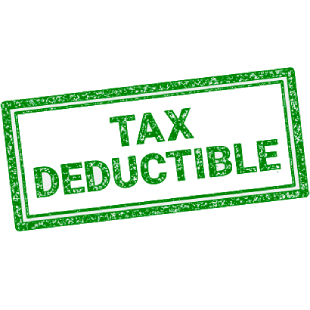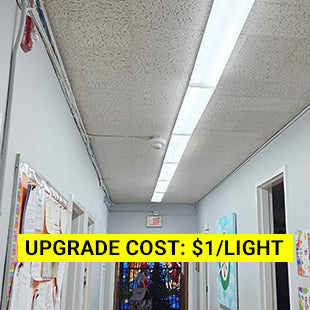8 Creative Ways to Cut Costs Across Your Company
Make your company more profitable and improve your cash flow with these eight tips. You won't find tip #8 in any other cost-cutting articles—but we think the other tips are pretty solid, too.
1. Take a Look in Your Supply Closet(s)
The Problem: The cost of office and cleaning supplies adds up. Not only can inefficient purchasing of supplies impinge on your cash flow; the storage of these supplies can take up real estate in your building that may be able to put toward more productive and profitable use.
The Solution: Start by getting a sense of what supplies you really need, and how much of them you really need to keep on the shelves at any given time. Once you have a list of items and frequency, do some price shopping to trim the cost of future purchases down. For supplies that are used at a fairly consistent rate, look into whether you can get even bigger savings if you put them on subscription, such as offered through Office Depot or OfficeSupply.com.
2. Cash In on Your Physical Space
The Problem: Physical space that isn't being put to productive use is a missed opportunity to increase income and cashflow.
The Solution: If you can reduce the footprint taken up by supplies, inventory, and other "just sitting there" items and equipment, you may be able to create unused space that you can either lease out for stable monthly cash flow or expand more of your own productive activity into—maybe add a second production line, for instance. If your company has shifted to more work-from-home hours for office employees, consider if you could turn some empty desks into rentable coworking space for entrepreneurs, small business owners, and remote workers from other companies who would rather not work out of their own homes.
3. Don't Let Your Waste Go to Waste
The Problem: Your office, factory, warehouse, or shop routinely finds itself disposing of leftover cardboard, paper, or metal.
The Solution: Look for recycling services that pay cash for cardboard, paper, or metal. This allows you to add to your revenue stream while reducing waste disposal costs.
4. Axe Your Outdated Subscriptions
The Problem: Every company has at least one subscription to a software service no one's logged into in three years, to industry journals or newspapers that no one's read since 2007, or to orphaned cell phone plans that didn't get reassigned or cancelled as part of the employee exit process.
The Solution: Make a list of the company's recurring credit card charges and pass them around departments to assess what each one is for and whether it's still used or worthwhile. Then take the list of orphans and dinosaurs and get them cancelled.
5. Cut Deals on the Services You Do Use
The Problem: Often we just let recurring software and other services auto-renew without any scrutiny. Over time, rates go up—or new players with better features and lower pricing hit the market and we're not even aware.
The Solution: Whether you're considering signing on with new providers or you're re-evaluating the costs of your current ones, rates are always up for negotiation. Put your company's best negotiator onto the job and see how much they can save you on the next renewals for all the services your company needs, from software to transport to commercial leases and beyond.
6. Make the Best Use of Everyone's Time
The Problem: Zombie activities! Reports that are regularly and painstakingly compiled yet add no measurable value to your company. Workflows that haven't been re-assessed since the day they were implemented. Activities that are being done a certain way—or at all—because "they've always been done." You'd be surprised what people might be doing on a regular basis because they think someone else still wants it done that way.
The Solution: Take a survey of things your employees regularly do. The survey should include a time-to-complete estimate and an answer to two questions: "What is the value of this task?" and "Who depends on this task being completed?" If no one depends on it and there isn't any real value to the company, do you really need to keep paying for it to be done? For everything that does have value, or is depended upon by someone else, get everyone who is part of or dependent upon a given process together to evaluate that process: Is it serving their needs, where are the bottlenecks or pain points, how can it be improved? Not only does this kind of communication make your employee's jobs more efficient; it creates more of a culture of interdependence, rather than leaving everyone on their own islets of responsibility.
7. Put Your Employees on the Job
The Problem: You can't think of everything.
The Solution: Get everyone looking for inefficiencies and opportunities. Offer incentives for employees who come up with implementable ways to improve efficiency, reduce waste, and/or increase revenue.
8. The Cost Cutting Measure No One Else Is Telling You About
The Problem: Costs need to be cut, and rising energy costs are not helping.
The Solution: Upgrade your lighting.
No, really. First of all, it may not cost as much as you're thinking. Many utilities in the U.S. have rebates and incentives available for commercial lighting upgrades, and these can be pretty generous. The rebate team here at ELEDLights has been able to get the cost of lights for some of our customers down to as low as $1/fixture plus sales tax. For example, this parking garage upgrade where our customer was able to install $65,000 worth of lights for just $430.
The amount that your company will be able to save on lighting upgrades will depend on your utility's incentives program and the details of your project. Fortunately, you don't have to go digging around trying to figure out your utility's incentives program. ELEDLights regularly does rebate assessments—for free—for our customers. We have access to rebate program info from all around the country. Let us know about the lighting you want to upgrade & we'll get you a clear & easy to understand report.
So—now you know that it might not cost terribly much to upgrade outdated, inefficient lighting. But even so: Is it worth it?
Let's say your facility is in California, and you have forty 4-lamp 2x4 fluorescent troffers running five days a week, ten hours a day. At an electricity rate of $0.2278/kWh, typical for a commercial rate in California, it's costing you over $3k per year to run those lights.
Swap them out with rebate-eligible retrofit kits & you would save nearly $2k per year on your electric bill, or nearly $10,000 over five years.
What about a parking lot with twenty metal halide lights in New York, where those lights are on 12 hours a day, 7 days a week? With an average rate of $0.19/kWh, you're looking at more than $6,600/year to run those lights.
Replace your parking lot light fixtures with rebate-eligible LED shoebox lights and the cost to light your parking lot drops to $2,500/year. That's a savings of more than $20,000 over five years.
You can run the numbers for your own lighting upgrade, using your company's electricity rate, with our quick-and-easy LED Lighting Energy Savings Calculator. Or we can put savings information together for you—just let us know when you request the free rebate assessment.
In many cases, it can make solid long-term sense to upgrade your lighting, even if you don't qualify for any of your utility's energy efficiency programs. Still, it doesn't hurt to check for rebates and incentives first! Go ahead and send us your info for a free, no-commitment rebate assessment. You can also call (215.355.7200) or text (267.266.8300) our team with any questions you have about rebates, LED lighting, and lighting upgrades.





